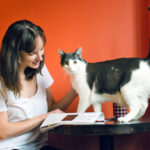The Cat in the Hat, a whimsical character created by Dr. Seuss, has been a staple in children’s literature for generations. However, alongside its enduring popularity, the Cat in the Hat has also been the subject of critical discussion, particularly regarding its potential origins and interpretations. This article delves into the complexities surrounding the Cat in the Hat, exploring the character’s possible inspirations, the controversies it has sparked, and the broader conversation about representation in children’s media.
The recent re-examination of Dr. Seuss’s works, prompted by discussions about racist imagery in classic children’s books, has brought the Cat in the Hat under closer scrutiny. While beloved by many, some scholars argue that the character embodies elements of blackface minstrelsy, a deeply problematic form of entertainment from American history. This perspective doesn’t negate the Cat’s playful charm, but it encourages a deeper understanding of the cultural context in which the character was created and how it might be interpreted today.
The Scholarly Perspective: “Was The Cat In The Hat Black?”
Philip Nel, a professor of English at Kansas State University, has written extensively on this topic. His book, Was The Cat In The Hat Black? The Hidden Racism of Children’s Literature, and the Need for Diverse Books, directly confronts the uncomfortable questions surrounding the character. Nel argues that the Cat in the Hat’s visual appearance and mischievous behavior bear a striking resemblance to caricatures prevalent in minstrel shows.
Minstrel shows, popular in the 19th and early 20th centuries, featured white performers in blackface makeup who presented exaggerated and often demeaning portrayals of African Americans. These performances relied on racist stereotypes for comedic effect. Nel suggests that Dr. Seuss, consciously or unconsciously, drew inspiration from these minstrel tropes when creating the Cat in the Hat. He points to the Cat’s tall stovepipe hat, white gloves, and chaotic antics as visual and behavioral cues that resonate with minstrelsy.
Furthermore, Nel highlights the anecdote that the Cat’s character was reportedly based on a Black elevator operator Dr. Seuss knew. While seemingly innocuous, this detail, combined with the visual and behavioral parallels, adds weight to the argument that the Cat in the Hat is rooted in a racially insensitive cultural tradition.
Beyond Blackface: Interpreting the Cat’s Role
It’s crucial to understand that identifying potential minstrel influences does not automatically label Dr. Seuss as intentionally racist. As Nel himself states, “I don’t think he’s intentionally recycling stereotypes… but the imagination is influenced by the culture in which it grows.” The point is not to condemn Dr. Seuss, but to acknowledge the pervasive nature of racism in society and how it can subtly seep into creative works, even those intended for children.
The Cat in the Hat’s role in the story also invites interpretation through this lens. He is an outsider who enters a seemingly ordered, white household and disrupts it with chaotic energy. While this disruption is ultimately presented as fun and exciting, the subtext of an “outsider” bringing chaos into a “normal” environment can be read as reinforcing existing social anxieties, particularly when viewed in the context of racial stereotypes. The Cat, despite his charm, is ultimately shown as someone who doesn’t truly belong, further complicating his characterization.
Navigating the Controversy in Education
The ongoing discussion about the Cat in the Hat and other classic children’s books presents a challenge and an opportunity for educators and parents. Simply banning these books might shield children from potentially problematic content, but it also avoids a chance for critical engagement and learning.
Scholars like Michelle H. Martin, the Beverly Cleary professor for children and youth services at the University of Washington, advocate for a more nuanced approach. She suggests using these books as springboards for discussion. By acknowledging the historical context and potential problematic elements, educators can help children develop critical thinking skills and a deeper understanding of social issues.
Instead of discarding The Cat in the Hat, teachers can use it as an entry point to discuss:
- Stereotypes: What are stereotypes, and how can they be harmful?
- Representation: Who is typically represented in children’s books, and who is often missing?
- Cultural Context: How does the time period in which a book was written influence its content?
- Critical Reading: How can we enjoy a story while also being aware of its potential biases or problematic elements?
By engaging with these questions, educators can transform potentially problematic texts into valuable learning experiences. This approach aligns with the idea of “embracing the history,” as suggested by scholars like Nel and Martin, and using discomfort as a catalyst for growth and understanding.
The Enduring Legacy and Moving Forward
The controversy surrounding the Cat in the Hat underscores the importance of ongoing critical analysis of children’s literature. It prompts us to consider not only the surface-level enjoyment of a story but also its deeper cultural implications. While the question of “who plays the Cat in the Hat” might initially seem like a simple inquiry about actors in adaptations, it opens up a far more complex and crucial discussion about representation, history, and the evolving landscape of children’s media.
As the children’s literature market strives for greater diversity and inclusivity, understanding the historical context of beloved characters like the Cat in the Hat becomes even more critical. It allows us to appreciate the character’s cultural impact while also acknowledging and addressing its problematic undertones. Moving forward, the goal is not to erase the past, but to learn from it and create a more equitable and representative future for children’s literature.

